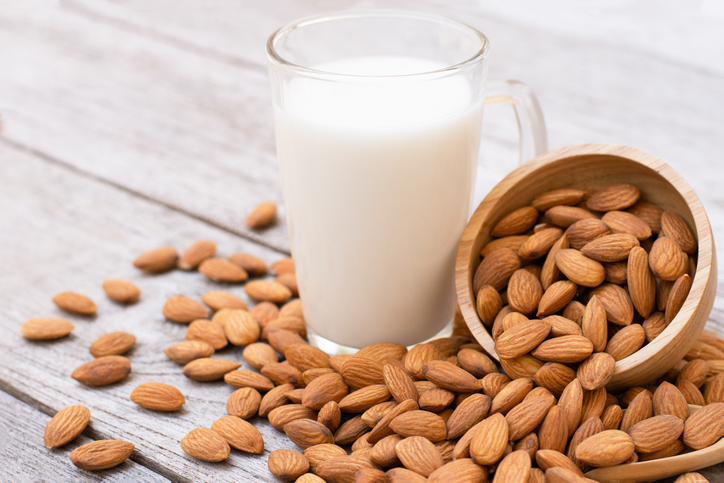Welcome to food fables, where we celebrate delicious, nutritious, and easy-to-make recipes! Today, we’re diving into the world of homemade almond milk with a special focus on the Plenish Almond Milk recipe. Whether you’re a long-time fan of almond milk or new to the dairy-free scene, this guide will walk you through everything you need to know to make your own perfect almond milk at home.
What is Plenish Almond Milk?
Plenish Almond Milk is a popular brand of dairy-free milk made from high-quality almonds. Known for its smooth texture and nutty flavor, Plenish Almond Milk is an excellent alternative for those who are lactose intolerant, vegan, or simply looking to reduce their dairy consumption. But did you know you can make a similar version right in your kitchen? In this blog post, we will provide you with a simple recipe to create almond milk that rivals store-bought brands.
Why Make Homemade Almond Milk?
Homemade almond milk has several advantages over store-bought versions, including:
- Control Over Ingredients: You can use organic almonds and avoid added sugars, preservatives, or artificial flavors.
- Freshness: Homemade almond milk is fresher and more flavorful.
- Customization: Adjust the sweetness or thickness according to your taste preferences.
- Cost-Effective: Making your own almond milk can be more affordable than buying pre-packaged options.
The Perfect Plenish Almond Milk Recipe
Here’s a straightforward recipe to create creamy, delicious almond milk at home. You’ll need just a few ingredients and some basic kitchen equipment.
Ingredients:
- 1 cup raw almonds
- 4 cups filtered water
- 1-2 tablespoons sweetener (optional, e.g., maple syrup, honey, or dates)
- 1 teaspoon vanilla extract (optional)
- A pinch of sea salt
Equipment:
- Blender
- Nut milk bag or cheesecloth
- Large bowl
- Fine mesh strainer
- Glass jar or bottle for storage
Instructions:
- Soak the Almonds: Place the almonds in a bowl and cover them with water. Let them soak overnight or for at least 8 hours. This softens the almonds and makes them easier to blend.
- Drain and Rinse: After soaking, drain the almonds and rinse them under cool water.
- Blend the Almonds: Place the soaked almonds and 4 cups of filtered water in a blender. Blend on high speed for 1-2 minutes until the mixture is smooth and creamy.
- Strain the Milk: Line a large bowl with a nut milk bag or cheesecloth. Pour the blended almond mixture into the bag or cloth, then squeeze and strain the milk into the bowl. You can use your hands or a spoon to help press out the milk.
- Add Flavor (Optional): Transfer the strained milk back to the blender and add sweetener, vanilla extract, and a pinch of sea salt if desired. Blend for a few seconds to combine.
- Store: Pour the almond milk into a clean glass jar or bottle and refrigerate. Homemade almond milk typically lasts for 3-5 days in the fridge. Shake well before each use as it may separate over time.
Tips for the Best Almond Milk
- Use Fresh Almonds: For the best taste and texture, use fresh, high-quality almonds.
- Strain Thoroughly: Ensure you squeeze out as much liquid as possible from the almond pulp to get a smooth milk.
- Customize Flavors: Feel free to experiment with different sweeteners or add-ins like cocoa powder or cinnamon.
FAQs About Homemade Almond Milk
| Question | Answer |
|---|---|
| How do I store homemade almond milk? | Store almond milk in a clean glass jar or bottle in the refrigerator. It usually lasts for 3-5 days. Shake well before each use. |
| Can I use the almond pulp? | Yes! The leftover almond pulp can be used in baking or as a base for almond flour. You can also freeze it for later use. |
| Can I use a regular blender? | Yes, a regular blender works perfectly for making almond milk. Just make sure it’s powerful enough to blend the almonds thoroughly. |
| Is homemade almond milk more nutritious? | Homemade almond milk can be more nutritious as you control the ingredients. However, commercial almond milks are often fortified with vitamins and minerals. |
| Can I make almond milk without soaking almonds? | Soaking almonds is recommended as it softens them and improves the texture of the milk. However, if you’re short on time, you can blend dry almonds, though the milk may be less smooth. |
For more delicious dairy-free recipes, check out our Homemade Nut Milks Guide. If you’re interested in learning more about the benefits of plant-based diets, visit Plenish’s Official Website for additional information.
Conclusion
Making your own almond milk at home is simple, rewarding, and allows you to tailor the flavor and sweetness to your liking. With this Plenish-inspired recipe, you can enjoy a creamy, nutritious, and cost-effective alternative to store-bought almond milk.
Try out this recipe today and taste the difference that homemade makes. Don’t forget to share your almond milk creations with us by tagging myfood on social media!
Feel free to leave any questions or comments below. Happy cooking!

